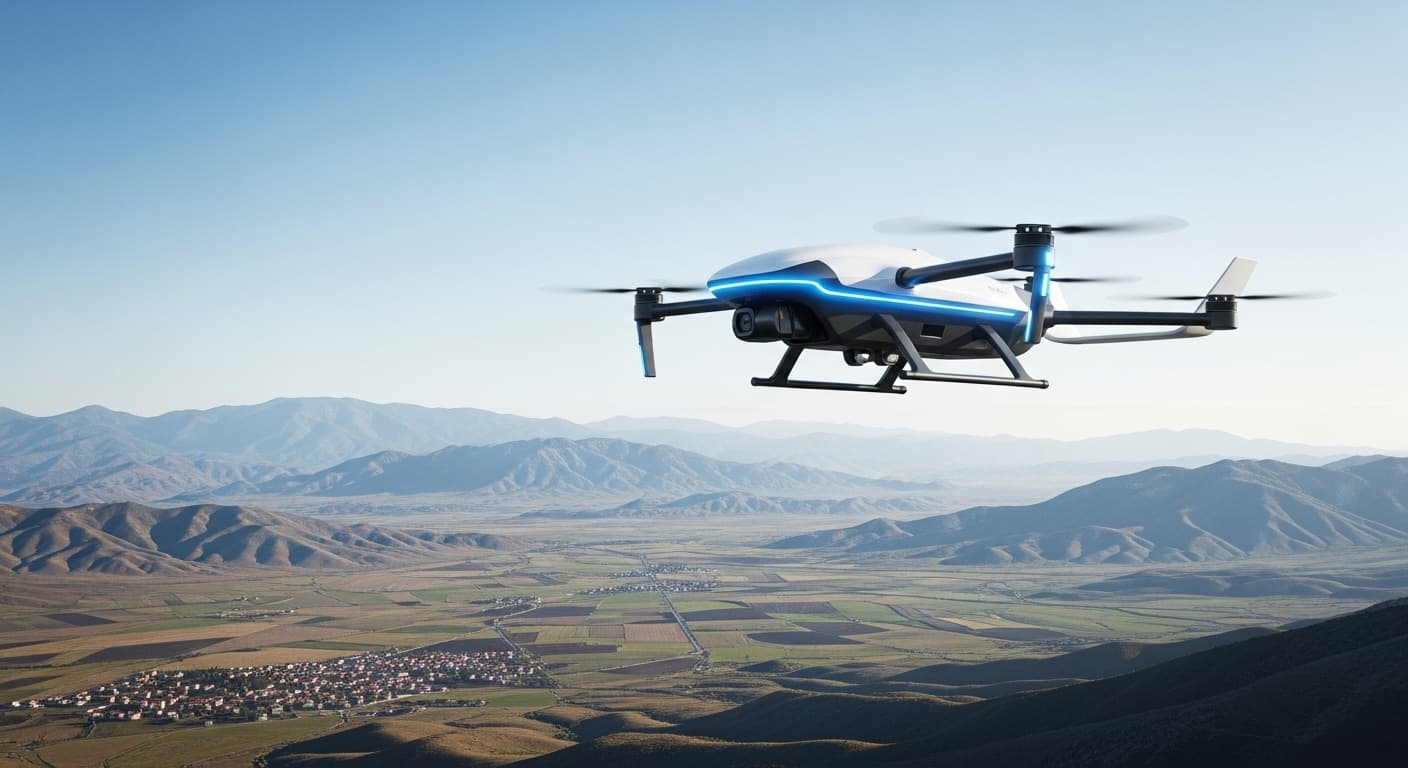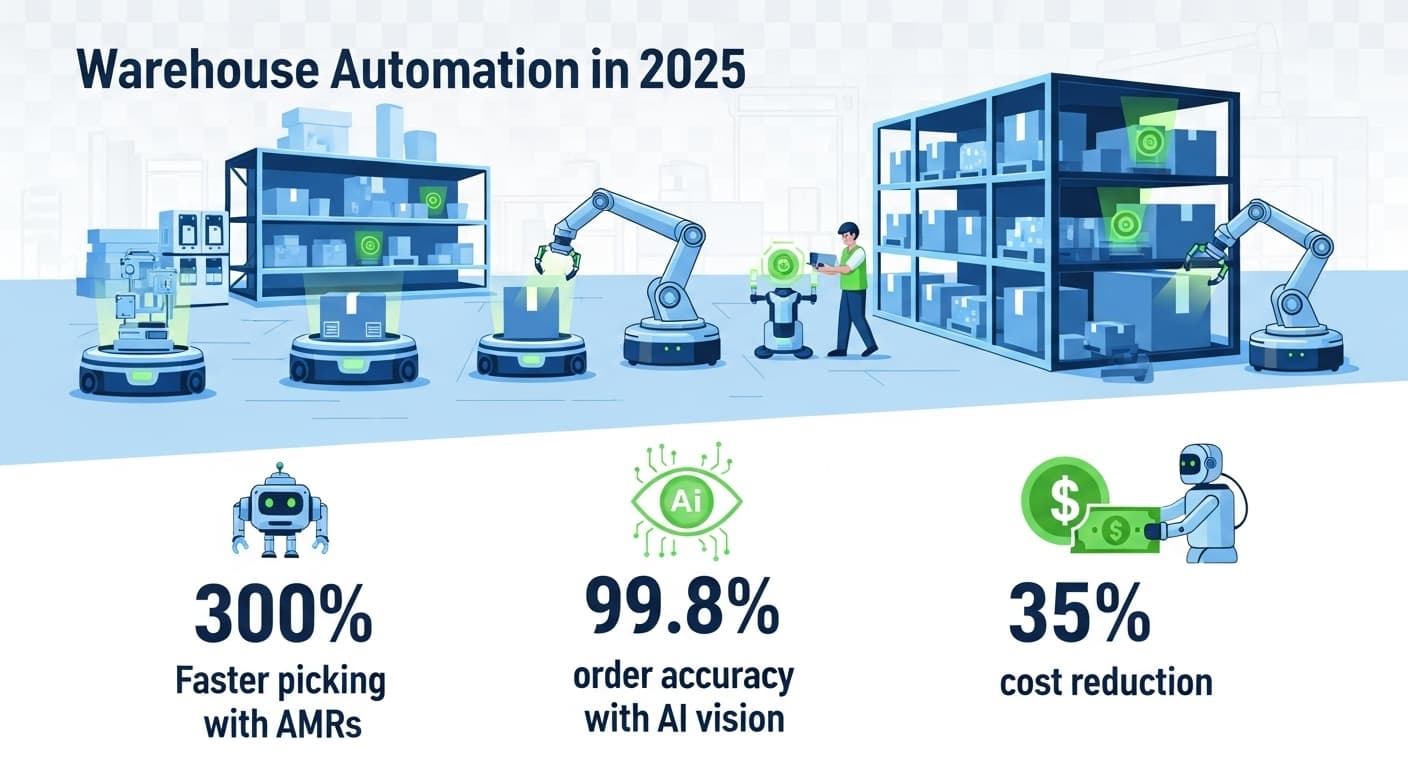
Executive Summary
Beyond Visual Line of Sight (BVLOS) drone operations represent a transformational opportunity for logistics providers seeking competitive advantage through autonomous delivery capabilities. Understanding regulatory frameworks, operational requirements, and implementation strategies enables companies to position themselves effectively in this rapidly evolving market segment while maintaining operational excellence and regulatory compliance.
Beyond Visual Line of Sight Drone Delivery: Strategic Implementation Framework for Modern Logistics
(无人机超视距配送:现代物流的战略实施框架)
1 · Understanding BVLOS Operations and Market Context
Beyond Visual Line of Sight drone operations enable autonomous aircraft to operate beyond the visual range of remote pilots, fundamentally expanding the operational scope and economic viability of commercial drone delivery. This capability represents a paradigm shift from traditional line-of-sight operations, enabling true scalability for logistics applications.
Defining BVLOS Capabilities and Operational Scope
Operational Framework: BVLOS operations allow drones to operate autonomously across extended distances without continuous visual contact with remote pilots. This capability enables:
Extended Range Operations:
- Corridor Networks: Established flight paths extending up to 77 miles between operational hubs
- Hub-to-Hub Connectivity: Direct autonomous flights between distribution centers and delivery points
- Multi-Stop Routing: Sequential deliveries across multiple locations within approved operational areas
- Time-Critical Missions: Rapid response capabilities for urgent delivery requirements
Autonomous Flight Capabilities:
- Pre-Programmed Routes: Automated flight path execution with minimal human intervention
- Real-Time Navigation: Dynamic route adjustment based on weather, traffic, and operational conditions
- Obstacle Avoidance: Advanced sensor systems enabling safe navigation around obstacles
- Emergency Procedures: Automated emergency response and landing capabilities
Market Evolution and Regulatory Momentum
Regulatory Development Trajectory: The Federal Aviation Administration’s approach to BVLOS regulation has evolved significantly, moving from restrictive case-by-case approvals toward systematic framework development.
FAA BEYOND Program Results: The BEYOND initiative has demonstrated the viability of scaled BVLOS operations through comprehensive testing and operational validation:
Phase 1 Achievements (2020-2024):
- Operational Volume: Over 70,000 total flights with 48,000+ BVLOS operations
- Safety Performance: Mission reliability exceeding 96% with incident rates below 0.06%
- Geographic Coverage: Operations across eight lead participant states including North Dakota, Virginia, and North Carolina
- Operational Diversity: Medical delivery, infrastructure inspection, and commercial logistics applications
Phase 2 Expansion (2025-2029):
- Scaled Operations: Expanded participant network and operational scope
- Technology Integration: Advanced detect-and-avoid systems and traffic management
- Commercial Viability: Focus on economic sustainability and operational efficiency
- Regulatory Framework: Development of permanent regulatory structure
Economic Viability and Market Opportunity
Cost Structure Evolution: BVLOS operations demonstrate increasingly favorable economics compared to traditional delivery methods:
Delivery Cost Analysis:
- 2023 Baseline: Average delivery cost of $14.80 per parcel for lightweight packages
- Current Performance: Reduced costs to approximately $9.25 per parcel (37% improvement)
- Scale Benefits: Continued cost reduction potential through operational scale and efficiency improvements
- Competitive Positioning: Cost structure approaching viability for mainstream commercial applications
Market Segmentation:
- Time-Critical Medical: Emergency medication and medical supply delivery
- Rural and Remote Areas: Service to locations with limited traditional delivery infrastructure
- High-Value Small Items: Electronics, pharmaceuticals, and specialized components
- Industrial Applications: Parts delivery to manufacturing and construction sites
2 · Regulatory Framework and Compliance Requirements
Understanding the complex regulatory environment surrounding BVLOS operations is essential for successful implementation and long-term operational sustainability.
Current Regulatory Structure and Requirements
Part 107 Waiver Process: The current regulatory framework relies primarily on case-by-case waivers under Part 107 of the Federal Aviation Regulations:
Waiver Requirements:
- Operational Safety Case: Comprehensive demonstration of equivalent level of safety to manned aircraft operations
- Pilot Qualifications: Remote pilot certification with appropriate endorsements and training
- Aircraft Specifications: Detailed technical specifications and safety system requirements
- Operational Procedures: Standard operating procedures for normal and emergency operations
2024 Waiver Statistics:
- Total Waivers Issued: 809 Part 107 waivers with approximately 25% related to BVLOS operations
- Processing Timeline: Average processing time of 90-120 days for complex BVLOS applications
- Approval Rate: Approximately 70% approval rate for well-prepared applications
- Operational Scope: Waivers typically limited to specific routes and operational parameters
Proposed Regulatory Changes and Timeline
Notice of Proposed Rulemaking (NPRM): The FAA has advanced a comprehensive NPRM addressing BVLOS operations, currently under White House review with anticipated final rule implementation by January 2026.
Key Proposed Provisions:
- Standardized Operations: Movement from case-by-case waivers to standardized operational approvals
- Performance-Based Standards: Focus on demonstrated safety performance rather than prescriptive requirements
- Scalable Framework: Regulatory structure supporting scaled commercial operations
- Integration Requirements: Coordination with existing air traffic management systems
Implementation Timeline:
- NPRM Publication: Expected public comment period of 60-90 days
- Industry Input: Comprehensive stakeholder engagement and comment analysis
- Final Rule Development: Incorporation of public comments and industry feedback
- Implementation Phase: Gradual rollout with existing waiver holders transitioning to new framework
Technology Requirements and Standards
Detect and Avoid (DAA) Systems: Advanced sensor and software systems enabling autonomous detection and avoidance of other aircraft and obstacles:
Technical Specifications:
- Sensor Integration: Multiple sensor types including radar, ADS-B, and electro-optical systems
- Processing Capabilities: Real-time data processing and decision-making algorithms
- Response Time: Sub-second response times for collision avoidance maneuvers
- Reliability Standards: System redundancy and fail-safe operational modes
Remote Identification Requirements:
- Real-Time Broadcasting: Continuous transmission of aircraft identification and location data
- Network Connectivity: Integration with FAA’s remote identification network
- Privacy Considerations: Balance between regulatory requirements and privacy protection
- Compliance Verification: Automated systems for verifying remote identification compliance
3 · Operational Implementation and Infrastructure Development
Successful BVLOS implementation requires comprehensive operational planning, infrastructure development, and systematic approach to scaling operations.
Infrastructure Requirements and Development
Ground Infrastructure:
- Launch and Recovery Sites: Designated areas meeting safety and operational requirements
- Maintenance Facilities: Technical support infrastructure for aircraft maintenance and repair
- Command and Control Centers: Remote pilot stations and operational monitoring facilities
- Storage and Logistics: Secure storage for aircraft, batteries, and operational equipment
Communication Systems:
- Primary Communication Links: Reliable communication systems for aircraft control and monitoring
- Backup Communication: Redundant communication systems for emergency situations
- Data Transmission: High-bandwidth data links for real-time operational monitoring
- Network Security: Cybersecurity measures protecting operational systems and data
Technology Integration:
- Flight Management Systems: Automated flight planning and execution software
- Traffic Management: Integration with existing air traffic control systems
- Weather Monitoring: Real-time weather data integration for operational decision-making
- Performance Analytics: Data collection and analysis systems for continuous improvement
Operational Procedures and Safety Management
Standard Operating Procedures: Comprehensive operational procedures covering all aspects of BVLOS operations:
Pre-Flight Operations:
- Mission Planning: Route planning, weather assessment, and operational risk analysis
- Aircraft Inspection: Systematic pre-flight inspection and system verification
- Regulatory Compliance: Verification of operational authority and regulatory compliance
- Communication Verification: Testing of all communication and control systems
In-Flight Operations:
- Autonomous Monitoring: Continuous monitoring of aircraft performance and system status
- Traffic Coordination: Coordination with air traffic control and other aircraft
- Emergency Procedures: Rapid response to system failures or operational emergencies
- Performance Documentation: Real-time logging of operational performance and incidents
Post-Flight Operations:
- Data Analysis: Comprehensive analysis of flight performance and system operation
- Maintenance Planning: Identification of maintenance requirements and scheduling
- Regulatory Reporting: Completion of required regulatory reporting and documentation
- Continuous Improvement: Integration of lessons learned into operational procedures
Safety Management and Risk Mitigation
Comprehensive Safety Management System:
- Hazard Identification: Systematic identification and assessment of operational hazards
- Risk Assessment: Quantitative analysis of operational risks and mitigation strategies
- Safety Performance Monitoring: Continuous monitoring of safety metrics and trends
- Incident Investigation: Thorough investigation of incidents and implementation of corrective actions
Emergency Response Procedures:
- System Failure Response: Automated and manual procedures for addressing system failures
- Communication Loss Procedures: Predetermined responses to loss of communication with aircraft
- Weather Emergency Procedures: Protocols for responding to sudden weather changes
- Airspace Incursion Response: Procedures for responding to unauthorized airspace entry
4 · Business Applications and Market Opportunities
BVLOS operations enable new business models and service offerings that were previously impractical or impossible with traditional delivery methods.
Healthcare and Medical Delivery Applications
Time-Critical Medical Shipments: BVLOS operations excel in applications requiring rapid delivery of medical supplies and equipment:
Emergency Medication Delivery:
- Rural Healthcare: Service to remote healthcare facilities with limited access
- Emergency Response: Rapid delivery of critical medications during medical emergencies
- Prescription Delivery: Direct-to-patient delivery for homebound or isolated patients
- Blood and Tissue Transport: Time-sensitive delivery of blood products and tissue samples
Operational Advantages:
- Speed and Reliability: Faster than ground transportation with weather-independent operation
- Cost Effectiveness: Lower operational costs compared to helicopter or ambulance transport
- Access to Remote Areas: Service to locations inaccessible by traditional transportation
- Reduced Handling: Minimized handling reducing contamination risk for sensitive medical products
Performance Metrics:
- Delivery Time Improvement: 60-80% reduction in delivery time compared to ground transportation
- Service Reliability: 98%+ on-time delivery rate for emergency medical shipments
- Cost Savings: 40-60% cost reduction compared to traditional emergency transport methods
- Coverage Expansion: Service to areas previously without access to rapid medical delivery
Commercial and Industrial Applications
Manufacturing and Industrial Support:
- Spare Parts Delivery: Rapid delivery of critical spare parts to manufacturing facilities
- Tool and Equipment Transport: Delivery of specialized tools and equipment to work sites
- Quality Control Samples: Transport of samples for quality control and testing
- Document and Data Delivery: Secure transport of sensitive documents and data storage devices
Infrastructure and Utilities:
- Pipeline and Transmission Line Inspection: Automated inspection of critical infrastructure
- Emergency Repair Supplies: Rapid delivery of emergency repair materials
- Remote Site Support: Regular supply delivery to remote facilities and installations
- Environmental Monitoring: Transport of environmental monitoring equipment and samples
Retail and E-commerce Applications
Last-Mile Delivery Innovation:
- Rural E-commerce: Expansion of e-commerce delivery to underserved rural areas
- Same-Day Delivery: Ultra-fast delivery for high-value or time-sensitive items
- Return Logistics: Efficient return pickup from remote or difficult-to-access locations
- Specialty Items: Delivery of items requiring special handling or security
Subscription and Scheduled Services:
- Regular Deliveries: Scheduled delivery of recurring orders and subscriptions
- Inventory Replenishment: Automated replenishment of retail inventory
- Seasonal Services: Expanded delivery capacity during peak seasons
- Premium Services: High-value delivery services commanding premium pricing
5 · Technology Integration and System Architecture
Modern BVLOS operations require sophisticated technology integration across multiple systems and platforms to ensure safe, efficient, and scalable operations.
Advanced Flight Control and Navigation Systems
Autonomous Flight Management:
- Route Optimization: Real-time route optimization based on weather, traffic, and operational constraints
- Adaptive Navigation: Dynamic navigation adjustment responding to changing operational conditions
- Multi-Aircraft Coordination: Coordinated operations of multiple aircraft within shared airspace
- Predictive Analytics: Predictive modeling for maintenance, weather, and operational planning
Integration with Air Traffic Management:
- UTM Integration: Integration with Unmanned Traffic Management (UTM) systems
- ATC Coordination: Real-time coordination with air traffic control systems
- Conflict Resolution: Automated conflict detection and resolution systems
- Airspace Management: Dynamic airspace allocation and management capabilities
Data Analytics and Performance Optimization
Operational Analytics:
- Performance Monitoring: Real-time monitoring of aircraft and system performance
- Efficiency Analysis: Analysis of operational efficiency and optimization opportunities
- Predictive Maintenance: Predictive analytics for maintenance planning and scheduling
- Cost Optimization: Data-driven optimization of operational costs and resource allocation
Customer and Service Analytics:
- Delivery Performance: Tracking and analysis of delivery performance metrics
- Customer Satisfaction: Monitoring of customer satisfaction and service quality
- Market Analysis: Analysis of market demand and service expansion opportunities
- Competitive Intelligence: Monitoring of competitive performance and market positioning
Cybersecurity and Data Protection
Operational Security:
- Communication Security: Encrypted communication links protecting operational data
- System Access Control: Multi-factor authentication and role-based access controls
- Threat Monitoring: Continuous monitoring for cybersecurity threats and intrusions
- Incident Response: Rapid response procedures for cybersecurity incidents
Data Privacy and Compliance:
- Customer Data Protection: Comprehensive protection of customer and delivery data
- Regulatory Compliance: Compliance with data protection and privacy regulations
- Data Retention: Appropriate data retention and disposal procedures
- Audit and Reporting: Regular auditing and reporting of data protection practices
6 · Implementation Strategy and Best Practices
Successful BVLOS implementation requires systematic planning, phased deployment, and continuous optimization to achieve operational and financial objectives.
Strategic Planning and Assessment
Market Analysis and Opportunity Assessment: Organizations considering BVLOS operations should begin with comprehensive market analysis:
Service Demand Evaluation:
- Market Segmentation: Identification of target markets and customer segments
- Competitive Analysis: Assessment of competitive landscape and positioning opportunities
- Service Requirements: Understanding of customer service requirements and expectations
- Pricing Strategy: Development of pricing strategies reflecting value proposition and cost structure
Operational Feasibility Assessment:
- Infrastructure Requirements: Assessment of infrastructure needs and development costs
- Regulatory Compliance: Understanding of regulatory requirements and compliance costs
- Technology Capabilities: Evaluation of technology requirements and integration challenges
- Financial Modeling: Comprehensive financial modeling of implementation and operational costs
Phased Implementation Approach
Phase 1: Foundation Development Regulatory Preparation:
- Waiver Applications: Preparation and submission of Part 107 waiver applications
- Safety Case Development: Comprehensive safety case documentation and analysis
- Pilot Training: Remote pilot training and certification programs
- Operational Procedures: Development of standard operating procedures and safety management systems
Infrastructure Development:
- Facility Planning: Site selection and development of operational facilities
- Technology Procurement: Selection and procurement of aircraft and supporting technology
- System Integration: Integration of operational systems and technology platforms
- Testing and Validation: Comprehensive testing and validation of operational capabilities
Phase 2: Pilot Operations Limited Scope Deployment:
- Route Development: Establishment of initial operational routes and service areas
- Service Launch: Launch of limited pilot services with selected customers
- Performance Monitoring: Intensive monitoring of operational performance and safety metrics
- Process Refinement: Continuous refinement of operational processes and procedures
Market Development:
- Customer Acquisition: Development of initial customer base and service relationships
- Service Optimization: Optimization of service offerings based on customer feedback
- Market Validation: Validation of market demand and service value proposition
- Expansion Planning: Planning for expanded operations and service areas
Phase 3: Scaled Operations Service Expansion:
- Geographic Expansion: Expansion to additional markets and service areas
- Service Diversification: Development of additional service offerings and capabilities
- Capacity Scaling: Scaling of operational capacity to meet growing demand
- Technology Enhancement: Implementation of advanced technology and automation capabilities
Operational Excellence:
- Process Optimization: Continuous optimization of operational processes and efficiency
- Quality Management: Implementation of comprehensive quality management systems
- Performance Analytics: Advanced analytics for performance monitoring and optimization
- Continuous Improvement: Systematic continuous improvement programs and initiatives
7 · Risk Management and Mitigation Strategies
BVLOS operations involve complex risk considerations requiring comprehensive risk management frameworks and mitigation strategies.
Operational Risk Assessment and Management
Safety Risk Management:
- Hazard Identification: Systematic identification of operational hazards and safety risks
- Risk Assessment: Quantitative assessment of risk probability and impact
- Mitigation Strategies: Development and implementation of risk mitigation measures
- Performance Monitoring: Continuous monitoring of safety performance and risk indicators
Regulatory Compliance Risk:
- Regulatory Monitoring: Continuous monitoring of regulatory changes and requirements
- Compliance Auditing: Regular auditing of regulatory compliance and corrective actions
- Documentation Management: Comprehensive documentation supporting regulatory compliance
- Legal Counsel: Access to specialized legal counsel for regulatory matters
Business and Financial Risk Considerations
Market Risk Management:
- Demand Fluctuation: Strategies for managing seasonal and cyclical demand variations
- Competitive Response: Planning for competitive responses and market changes
- Technology Evolution: Adaptation to rapid technology changes and obsolescence
- Customer Concentration: Diversification strategies reducing customer concentration risk
Operational Risk Mitigation:
- Equipment Redundancy: Redundant equipment and systems reducing operational disruptions
- Supplier Diversification: Multiple suppliers reducing supply chain concentration risk
- Insurance Coverage: Comprehensive insurance coverage for operational and liability risks
- Contingency Planning: Detailed contingency plans for various operational scenarios
Insurance and Liability Considerations
Comprehensive Insurance Strategy:
- Aircraft Hull Coverage: Physical damage coverage for aircraft and equipment
- Liability Coverage: Third-party liability coverage for operational activities
- Cargo Coverage: Coverage for goods in transit and delivery
- Cyber Liability: Coverage for cybersecurity incidents and data breaches
Risk Transfer Mechanisms:
- Contractual Risk Transfer: Contract terms transferring appropriate risks to customers and suppliers
- Indemnification Agreements: Indemnification agreements with technology suppliers and service providers
- Limited Liability Structures: Corporate structures limiting liability exposure
- Professional Liability: Coverage for professional services and advice
8 · Future Outlook and Strategic Considerations
The BVLOS market continues evolving rapidly, creating both opportunities and challenges for logistics companies considering market entry or expansion.
Technology Evolution and Innovation Trends
Emerging Technology Capabilities:
- Artificial Intelligence: Advanced AI systems enabling fully autonomous operations
- Advanced Materials: Lighter, stronger materials improving aircraft performance and efficiency
- Battery Technology: Enhanced battery technology extending range and payload capabilities
- Sensor Integration: Advanced sensor systems improving safety and operational capabilities
Operational Automation:
- Fully Autonomous Operations: Movement toward fully autonomous operations with minimal human intervention
- Predictive Maintenance: AI-driven predictive maintenance reducing operational disruptions
- Dynamic Route Optimization: Real-time route optimization responding to changing conditions
- Integrated Supply Chain: Full integration with existing supply chain and logistics systems
Market Development and Competitive Landscape
Market Growth Projections:
- Service Demand: Continued growth in demand for time-critical and specialized delivery services
- Geographic Expansion: Expansion of service areas as regulatory framework develops
- Service Diversification: Development of specialized services for niche markets and applications
- Cost Reduction: Continued cost reduction through scale and technology advancement
Competitive Dynamics:
- Market Entry: Entry of new players with specialized capabilities and service offerings
- Partnership Development: Strategic partnerships between logistics companies, technology providers, and customers
- Consolidation Trends: Market consolidation as operational scale becomes increasingly important
- Innovation Competition: Competition based on technology capabilities and service innovation
Regulatory Evolution and Industry Standards
Long-Term Regulatory Framework:
- Performance-Based Regulation: Movement toward performance-based rather than prescriptive regulation
- International Harmonization: Coordination with international regulatory frameworks and standards
- Advanced Operations: Regulatory framework supporting advanced autonomous operations
- Urban Operations: Development of regulatory framework for urban and suburban operations
Industry Standardization:
- Technical Standards: Development of industry-wide technical standards and specifications
- Operational Procedures: Standardization of operational procedures and safety management
- Training and Certification: Standardized training and certification programs
- Quality Assurance: Industry-wide quality assurance and performance standards
9 · Strategic Recommendations and Implementation Guidance
Key Success Factors for BVLOS Implementation
Strategic Foundation Development: Successful BVLOS operations require strong strategic foundation built on comprehensive market understanding, regulatory compliance, and operational excellence:
Market Positioning:
- Value Proposition Development: Clear articulation of unique value proposition and competitive advantages
- Target Market Focus: Strategic focus on specific market segments and customer needs
- Service Differentiation: Development of differentiated service offerings creating competitive advantage
- Brand Development: Strong brand development supporting market recognition and customer trust
Operational Excellence:
- Quality Management: Comprehensive quality management systems ensuring consistent service delivery
- Performance Monitoring: Continuous monitoring and optimization of operational performance
- Customer Service: Excellence in customer service and relationship management
- Continuous Improvement: Systematic continuous improvement programs driving operational advancement
Implementation Planning Recommendations
Systematic Approach:
- Comprehensive Planning: Thorough planning addressing all aspects of BVLOS implementation
- Phased Deployment: Systematic phased deployment minimizing risk and enabling learning
- Stakeholder Engagement: Comprehensive stakeholder engagement including customers, regulators, and communities
- Risk Management: Proactive risk management addressing operational, regulatory, and business risks
Resource Allocation:
- Technology Investment: Appropriate investment in technology and infrastructure
- Human Resources: Development of specialized expertise and operational capabilities
- Financial Planning: Comprehensive financial planning supporting long-term sustainability
- Partnership Development: Strategic partnerships enhancing capabilities and market access
Long-Term Strategic Positioning
Competitive Advantage Development:
- Technology Leadership: Investment in advanced technology creating sustainable competitive advantages
- Operational Efficiency: Superior operational efficiency enabling cost leadership and service excellence
- Market Knowledge: Deep market knowledge enabling superior customer service and market responsiveness
- Regulatory Expertise: Regulatory expertise enabling rapid adaptation to changing requirements
Future-Proofing Strategies:
- Adaptability: Building capabilities enabling rapid adaptation to changing market conditions
- Innovation Culture: Culture of innovation driving continuous advancement and improvement
- Strategic Flexibility: Maintaining strategic flexibility enabling response to market opportunities
- Sustainable Growth: Strategies supporting sustainable long-term growth and market leadership
10 · Conclusion and Strategic Outlook
Beyond Visual Line of Sight drone operations represent a transformational opportunity for logistics companies seeking to establish competitive advantage through innovative delivery capabilities. Understanding the regulatory environment, operational requirements, and implementation challenges enables companies to make informed strategic decisions about market entry and operational development.
The regulatory framework continues evolving toward greater operational flexibility and commercial viability, while technology advancement continues improving operational capabilities and economic performance. Companies that approach BVLOS implementation strategically, with comprehensive planning and systematic execution, will be best positioned to capture market opportunities and achieve sustainable competitive advantage.
Success in BVLOS operations requires balancing multiple considerations including regulatory compliance, operational safety, economic viability, and customer service excellence. Organizations that maintain focus on these critical success factors while building capabilities for long-term adaptation and growth will achieve superior results in this rapidly evolving market.
The future of BVLOS operations appears promising, with continued regulatory support, technology advancement, and market demand growth creating favorable conditions for expansion and innovation. Companies that invest in building comprehensive BVLOS capabilities today will be positioned to lead market development and capture competitive advantages as the industry continues maturing.
Understanding that BVLOS represents not just a new delivery method, but a fundamental shift toward autonomous logistics operations, enables companies to position themselves strategically for long-term success in an increasingly automated and efficient logistics industry.
This comprehensive analysis provides strategic insights and practical guidance for BVLOS implementation in commercial logistics operations. Organizations considering BVLOS deployment or seeking to optimize their current operations may benefit from professional consultation with experienced aviation and logistics specialists who can provide guidance tailored to specific operational requirements and market conditions.



